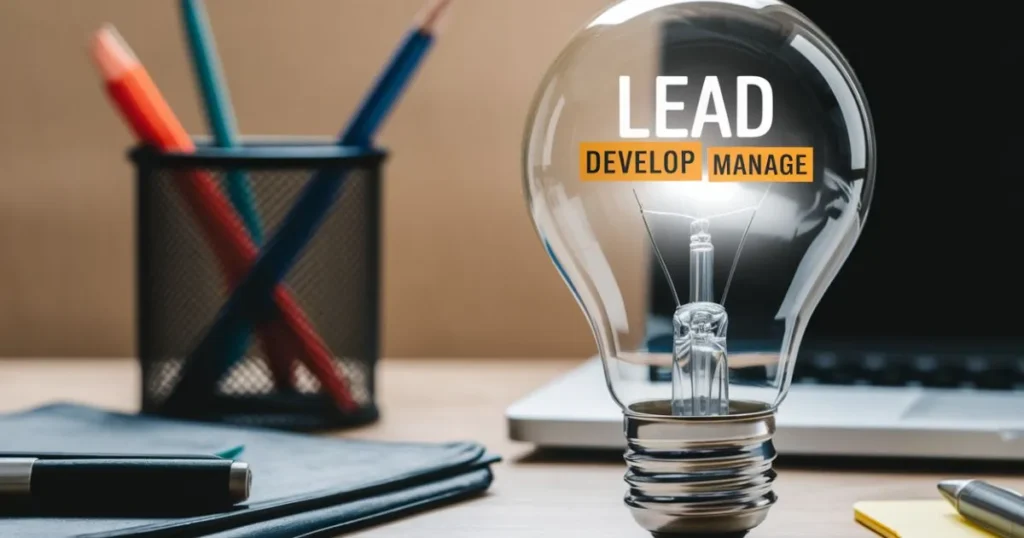LDM stands for Lead, Develop, and Manage. It’s a key process in real estate. This approach helps real estate professionals work effectively. It covers the main stages of client relationships. LDM guides agents from finding new clients to closing deals.
The LDM process has three main steps. First, agents lead by attracting potential clients. Next, they develop relationships with these leads. Finally, they manage ongoing client needs and transactions. Each step requires different skills. Mastering LDM can boost an agent’s success in real estate.
Key Steps in the LDM Process
The key steps in the LDM process include property evaluation, legal checks, and document preparation. Next, financial assessments and funding are arranged. Finally, the transaction is executed, completing the deal.
Step 1: Initial Assessment and Property Evaluation
The process starts with looking at the property. An expert checks its condition. They note any issues or repairs needed. The location and nearby areas are also studied. This step helps set a fair price for the property.
Step 2: Legal Due Diligence
This step is about checking all legal matters. It includes:
- Verifying property ownership
- Checking for any legal disputes
- Reviewing zoning laws
- Ensuring all property taxes are paid
- This helps avoid future legal problems.
Step 3: Documentation and Agreement Preparation
Now, all necessary papers are prepared. This includes the sale agreement. Other documents might be needed too. All terms of the sale are clearly written down. Both buyer and seller should understand these papers fully.
Step 4: Financial Evaluation and Funding
This step looks at money matters. For buyers, it often means:
- Getting a mortgage approved
- Arranging for a down payment
- Planning for closing costs
- Sellers might need to settle any loans on the property.
Step 5: Transaction Execution
This is the final step. Here’s what happens:
- All parties sign the required documents
- Money is transferred from buyer to seller
- The property deed is handed over
- Keys are given to the new owner
- This completes the property transfer
Related Blog: What Does LDT Mean in Real Estate? A Comprehensive Guide
Challenges in the LDM Process

The LDM process in real estate can face several challenges. Market changes can make lead generation difficult. Some potential clients may not respond to outreach efforts. Developing relationships takes time and patience.
Agents might struggle to keep leads engaged. Managing client expectations can also be tricky. Technology issues can hinder the LDM process in real estate. Outdated systems may slow down communication. Keeping client data secure is a constant concern.
Balancing multiple clients at different stages can be overwhelming. Time management becomes crucial. Adapting to new marketing trends and legal regulations adds complexity. Despite these challenges, mastering LDM remains key to success in real estate.
Benefits of Mastering the LDM Process
Improved Transaction Efficiency
Mastering the LDM process speeds up real estate deals. Agents handle leads more effectively. They move clients through stages faster. This leads to quicker sales and purchases. Paperwork gets done more smoothly. Clients feel satisfied with the quick process.
Enhanced Risk Management
The LDM process helps agent’s spot potential issues early. They can:
- Identify legal problems before they grow
- Catch financial risks in advance
- Avoid deals with hidden complications
- This protects both agents and clients from costly mistakes.
Better Decision-Making in Property Investments
LDM skills improve investment choices. Agents gather better information about properties. They understand market trends more clearly. This helps clients make smarter buying or selling decisions. Investors can:
- Choose properties with higher potential
- Avoid overpriced assets
- Time their market entry and exit better
- Good LDM practices lead to more profitable investments overall.
Best Practices for Navigating the LDM Process

To navigate the LDM process, always start with thorough research and legal checks. Use technology for better property analysis and document management. Work with experts like real estate agents and lawyers for guidance.
Tips for Buyers and Sellers
Here are some tips for buyers and sellers in real estate, presented in short, easy-to-read points:
Tips for Buyers:
- Get pre-approved for a mortgage
- Know your budget and stick to it
- Research neighborhoods thoroughly
- Attend multiple home viewings
- Have a professional home inspection done
- Ask questions about property history and condition
Tips for Sellers:
- Price your home correctly from the start
- Declutter and stage your home
- Make necessary repairs before listing
- Consider professional photography for listings
- Understand all terms in the sale agreement
Related Blog: What is First TD in Real Estate? The ultimate Guide
Leveraging Technology in LDM

Modern technology has transformed the LDM process in real estate. Digital tools help agents find and manage leads more efficiently. Customer Relationship Management (CRM) systems track client interactions. Social media platforms expand reach for lead generation. Online advertising targets specific demographics effectively.
Mobile apps streamline communication in the development phase. Virtual tours and 3D modeling enhance property showcases. These tools help clients view properties remotely. Electronic signatures speed up agreement processes.
Data analytics improve the management aspect of LDM. AI chatbots provide instant responses to common queries. Smart home technology adds value to property listings. These tech advancements make the entire LDM process faster and more effective.
Working with Professionals: Real Estate Agents, Lawyers, and Consultants
Working with professionals is essential in real estate transactions. Real property agents guide customers and sellers through the procedure. They assist locate residences, negotiate prices, and handle paperwork. Lawyers ensure all legal aspects are covered.
Consultants offer specialized advice on matters like property valuation or market trends. Each professional brings unique expertise to the table. Working together, these professionals make transactions smoother and safer. They help clients avoid common pitfalls.
Frequently Asked Questions
What does LDM stand for in real estate?
LDM stands for Lead, Develop, and Manage.
Why is the LDM process important?
It helps agents attract clients, build relationships, and close deals.
What are the main steps in the LDM process?
Lead generation, relationship development, and transaction management.
What challenges are common in LDM?
Market changes, client engagement, and time management.
How does technology help in LDM?
It streamlines lead management, communication, and document handling.
Conclusion
LDM is crucial in real estate. It covers lead generation to client management. Key steps include property evaluation and legal checks. Technology enhances modern LDM. Working with professionals is important for success.
LDM process in real estate will become more tech-driven. AI will improve lead targeting. Virtual reality may change property viewings. Blockchain could streamline transactions. Core LDM principles will remain, but methods will evolve.
Mastering LDM is key to real estate success. It requires continuous learning and adaptation. Balancing tech with personal touch is crucial. Understanding client needs remains important. Ethical practices should always come first.

Paul Mitchell, our website’s author, leverages 6 years of business expertise to provide insightful content. His wealth of experience enriches our platform, offering valuable insights for our readers.











